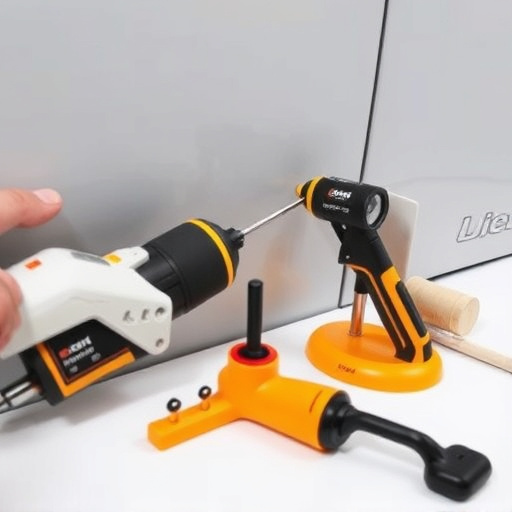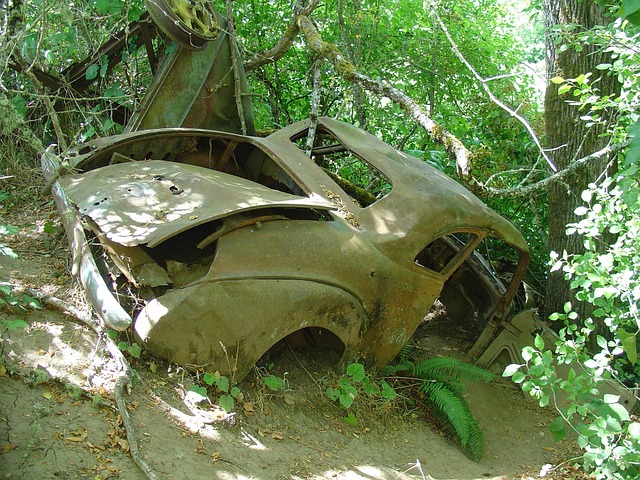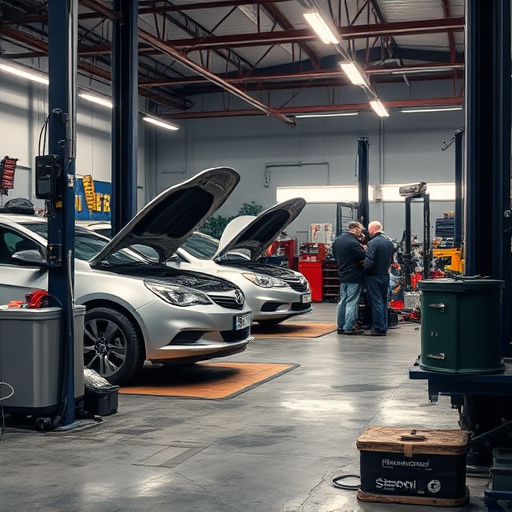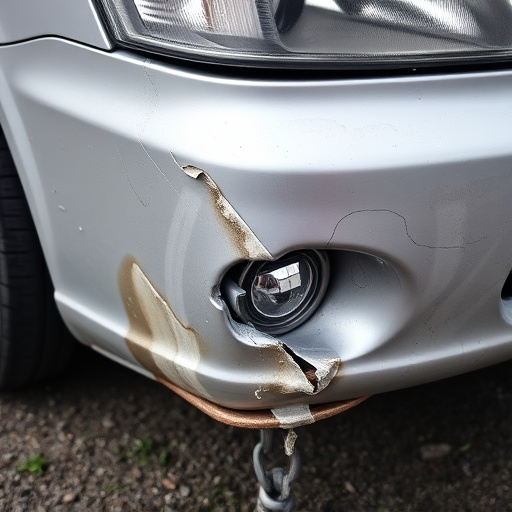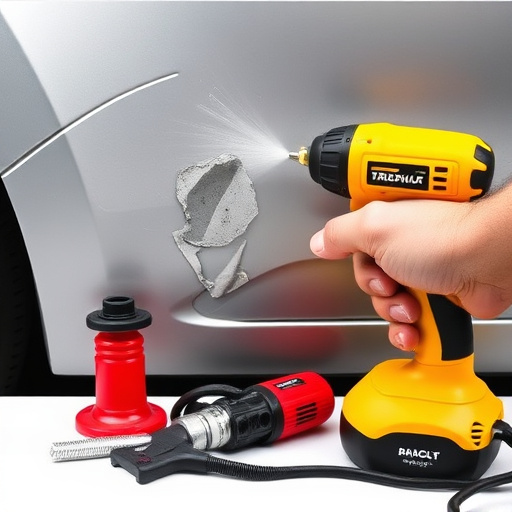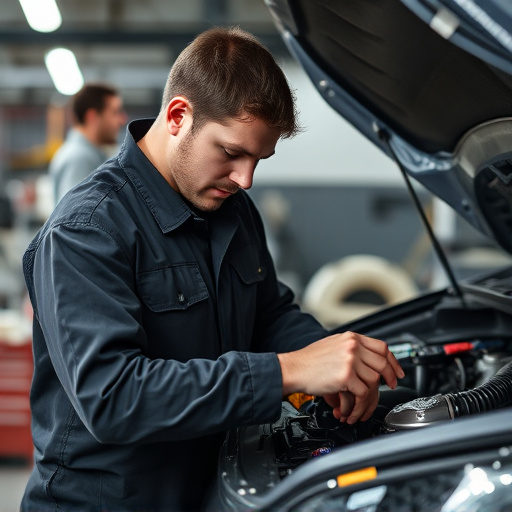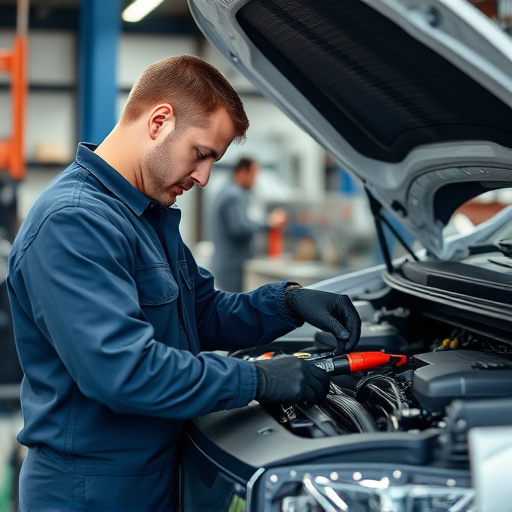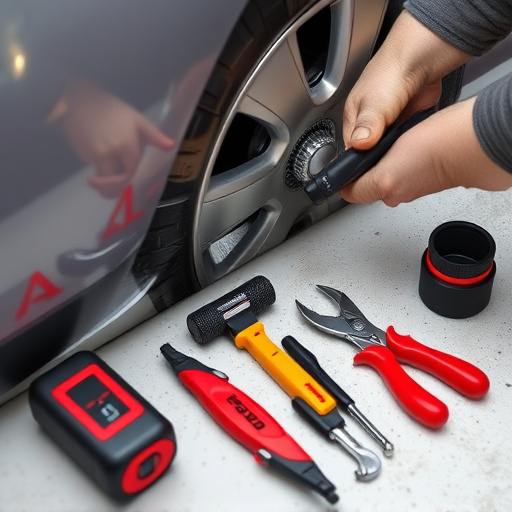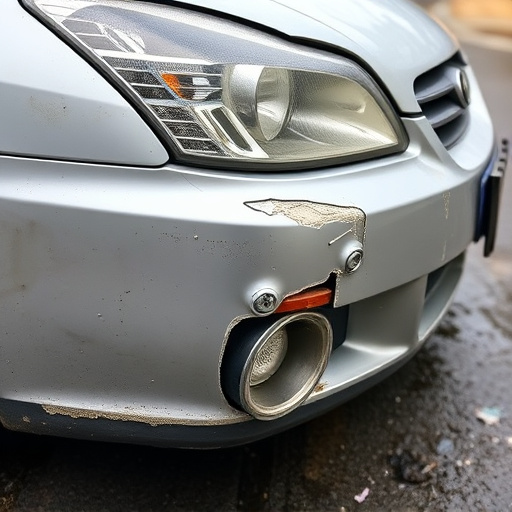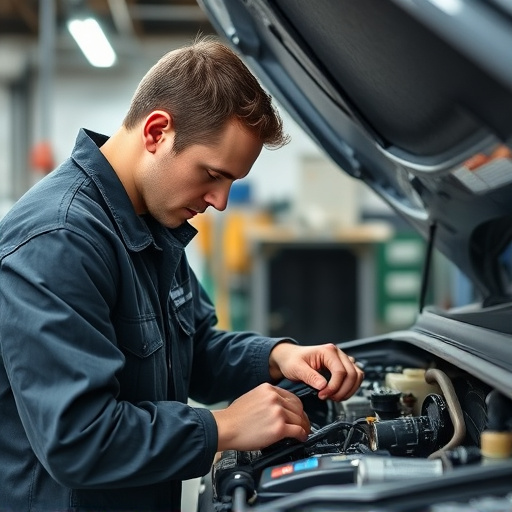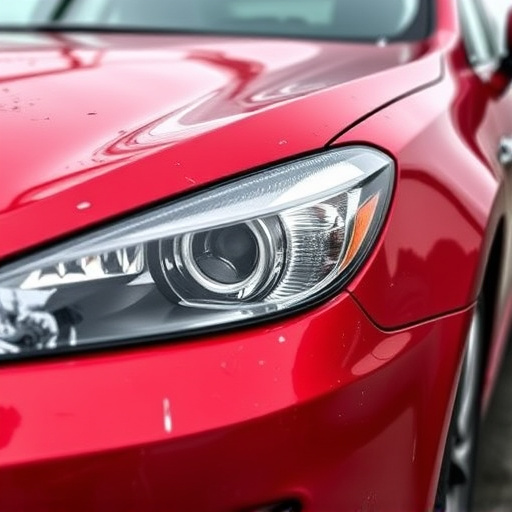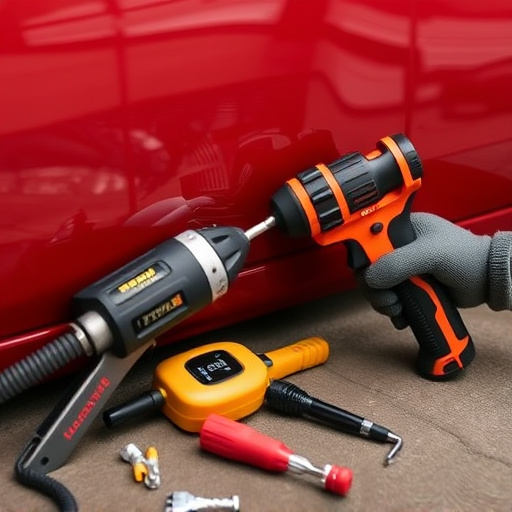Plastic bumper repair begins with a detailed damage assessment and surface preparation. This involves cleaning, sanding, and priming for optimal adhesion. Material selection is crucial, choosing products matching the car's plastic composition for strength and durability. Proper prep and materials ensure reliable repairs, enhancing structural integrity for extended periods.
Plastic bumper repair is a meticulous process that demands careful attention to detail. Before any repairs can commence, a thorough inspection is crucial to assess the extent of damage and determine the scope of work required. This involves closely examining the affected area for cracks, dents, or delaminations. Once the damage is accurately evaluated, the next step is meticulous surface preparation to ensure optimal adhesion for long-lasting repairs. Choosing the right materials is equally vital to guarantee strength and durability in plastic bumper repair.
- Assess Damage and Determine Repair Scope
- Meticulous Surface Preparation for Optimal Adhesion
- Choosing the Right Materials for Longevity and Strength
Assess Damage and Determine Repair Scope
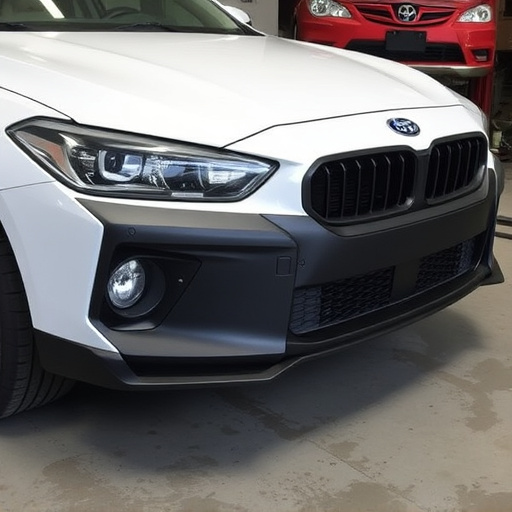
When it comes to plastic bumper repair, the initial step involves a meticulous assessment of the damage. This critical phase sets the stage for the entire repair process and ensures that the final outcome is both effective and aesthetically pleasing. The inspection includes a comprehensive review of the bumper’s surface, looking for cracks, dents, or any signs of impact. Technicians will also check for alignment issues, as proper positioning is vital to the bumper’s structural integrity. By thoroughly understanding the extent of the damage, auto body repair experts can accurately determine the scope of work required.
Depending on the severity, this might involve simple techniques like painting and bonding to restore the bumper to its original state or more intricate processes such as frame straightening for deeper dents or complex structural repairs. The automotive body shop’s team will utilize advanced tools and their expertise to assess and plan, guaranteeing a precise and thorough plastic bumper repair tailored to each unique case.
Meticulous Surface Preparation for Optimal Adhesion
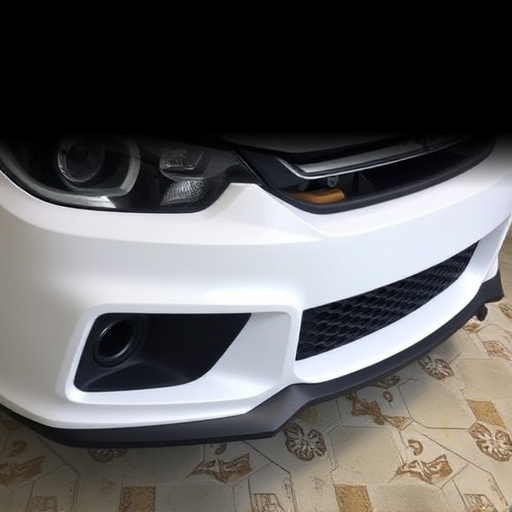
Before any plastic bumper repair begins, meticulous surface preparation is paramount to ensure optimal adhesion of the repair materials. This involves several steps to ensure the surface is clean, free from contaminants, and properly smoothed. First, thoroughly inspect the damaged area for any debris, dirt, or loose particles that could interfere with the repair process. A high-pressure wash or a specialized cleaner can be used to remove these impurities, leaving behind a clean canvas for the next stage.
Once the surface is pristine, it’s crucial to use specialized tools and compounds to achieve a smooth finish. This may include sanding with progressively finer grits to eliminate any rough patches or imperfections, followed by applying a primer that bonds well with plastic. The goal is to create a seamless transition between the repaired area and the rest of the bumper, ensuring both aesthetic uniformity and structural integrity in automotive repair services. Proper surface preparation sets the foundation for successful plastic bumper repair, guaranteeing long-lasting results and enhancing the vehicle’s overall appearance.
Choosing the Right Materials for Longevity and Strength

When it comes to plastic bumper repair, selecting the appropriate materials is a crucial step for ensuring longevity and structural integrity. The market offers various options, from basic adhesives to specialized polyols and urethanes. For durable repairs that mimic the original car bodywork, advanced composite materials are recommended. These materials not only provide strength but also offer excellent resistance to impact and environmental factors, ensuring your bumper remains in top condition for longer.
Choosing the right products involves considering the type of plastic used in your vehicle’s bumper. Different plastics have varying properties, requiring specific adhesives or fillers. For instance, ABS (Acrylonitrile Butadiene Styrene) plastic, commonly found in many modern cars, necessitates a high-quality adhesive designed for its robust structure. Proper preparation and material selection are key to achieving long-lasting results in automotive repair, especially when aiming for precise and reliable plastic bumper repair.
Plastic bumper repair is a meticulous process that demands careful assessment, precise preparation, and thoughtful material selection. By thoroughly inspecting the damage, preparing the surface diligently, and choosing durable components, repairs can restore not just the aesthetic appeal but also the structural integrity of your vehicle’s bumper. Embrace these steps to achieve long-lasting, high-quality plastic bumper repair results.
